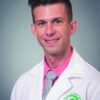Welcome to Day 3 at HM18
What an amazing 3 days! As we spoke on the first day, delivering higher value of care has been a highlight of this annual conference. With thought-provoking sessions from Kate Goodrich, MD, MHS, on payment reform; Eric Howell, MD, on “Value is NOT a 4-Letter Word”; and Lenny Feldman, MD, SFHM, on “Things We Do for No Reason,” hospital medicine’s focus on value is clear. I hope you also had the chance to attend the sessions on clinical topics of medicine, education, and practice management.
The final day of the conference is no exception when it comes to topics with impact. Starting off at 7:30 a.m., there is a diverse group of sessions on clinical medicine for adults and pediatrics, including “Peter Pan Grows Up: How to Care for Your Patients with Chronic Pediatric Conditions,” topics in health policy, how to advance in academic medicine with a focus on writing a winning abstract, and applying what you have learned at HM18 back home.
This day also offers sessions on advancement with topics for mid-career hospitalists and those aspiring to leadership roles. Promotion in academic medicine also will be addressed.
You can further strengthen your presentation skills in sessions that will teach you how to create valuable teaching points on the fly and deliver memorable lectures and talks. Other sessions will enhance your skills in emotional intelligence.
As always, we are extremely fortunate to wrap up the day with Bob Wachter, MD, MHM, who is sure to deliver a thought-provoking and entertaining presentation entitled “Hospitalists as Drivers of Innovation and System Change: Are We Doing Enough?”
As you wrap up your final day, I wish you a safe journey back home. Please continue your engagement with the Society through chapter meetings in your area, signing up for committees and interest groups, and dropping us a line – we look forward to continuing to work for you in the coming year.
Dr. Afsar is the incoming president of the Society of Hospital Medicine and the chief ambulatory officer & CMO for ACOs at UC Irvine Health in Orange, Calif.








